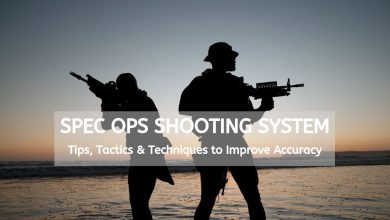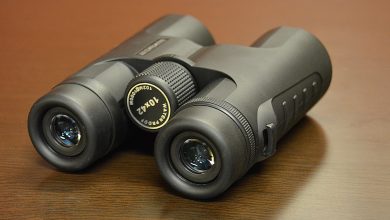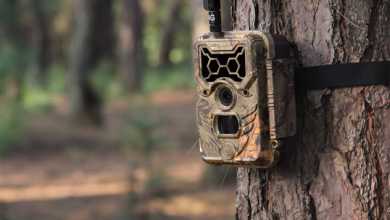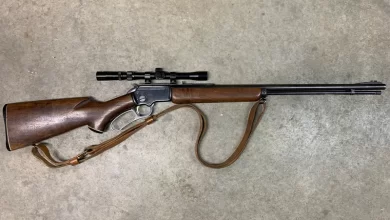THE .300 WINCHESTER MAGNUM (.300 WIN MAG)
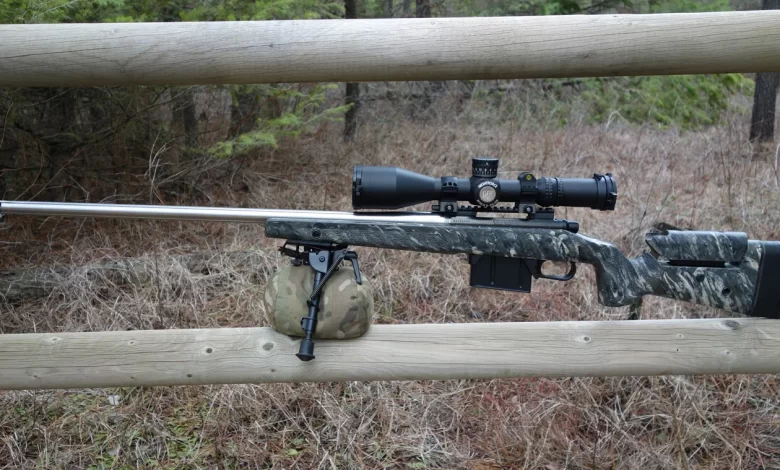
Fierce Fury TXR, .300 Winchester Magnum: Fierce Firearms offers some of the lightest, most accurate long-distance rifles on the market (Fiercearms.com)
When I was a youngster, I thought of magnum cartridges as being too much gun for a real hunter. I felt that there was just no need for them. The use of smaller rounds was commonplace among the group I went a field with. Of course, I was influenced by the old-timers that said all you need for deer hunting is .a 22 and to be a fine marksman. Many exaggerated stories have been told of dropping a buck at 300 yards with a well placed .22 slug. Of course, being a “fine marksman” is an integral part of the equation.
But the other half is applying common sense when choosing your weapon. I bought into some of the old-timer’s theory until I purchased my first magnum, a .300 Win, for target shooting. This is when I gained a true appreciation of how useful, fun and powerful a magnum cartridge can be. In fact, this appreciation has led me to acquire many magnums, both hunting and long-range paper guns. But of all the magnums I own, the .300 is the one I enjoy the most. And apparently, I am not the only one who has “magnumitis”, there has definitely been a growing trend towards magnums in the hunting industry.
The .300 WINCHESTER MAGNUM
The standard Winchester magnum family, i.e. the .264, .300, .338 and the .458, were developed using a shortened version of the H&H case. Winchester shortened the H&H case for the purpose of being able to chamber these cases in a standard length action, thus eliminating some action weight and long bolt throw required of the H&H and Weatherby magnums. Since these were designed as primarily hunting cartridges, a lighter, shorter rifle handles better and appeals more to the hunter. Development of the 300 Win actually used its older brother the .338 Win Mag as the starting point.
To maximize powder capacity, Winchester lengthened the case about 1/8” and most notably moved the steep shoulder junction forward .156”. These modifications leave the case with a short neck that is less than bullet diameter in length. Some experts would consider this to be a design flaw that would hinder accuracy. It was thought that a longer neck was needed to hold the bullet in alignment with the axis of the barrel. This is obviously not a problem with the 300 Win as it is one of the most accurate cartridges available today.
With so many magnums to choose from, why the .300 Winchester Magnum Win?
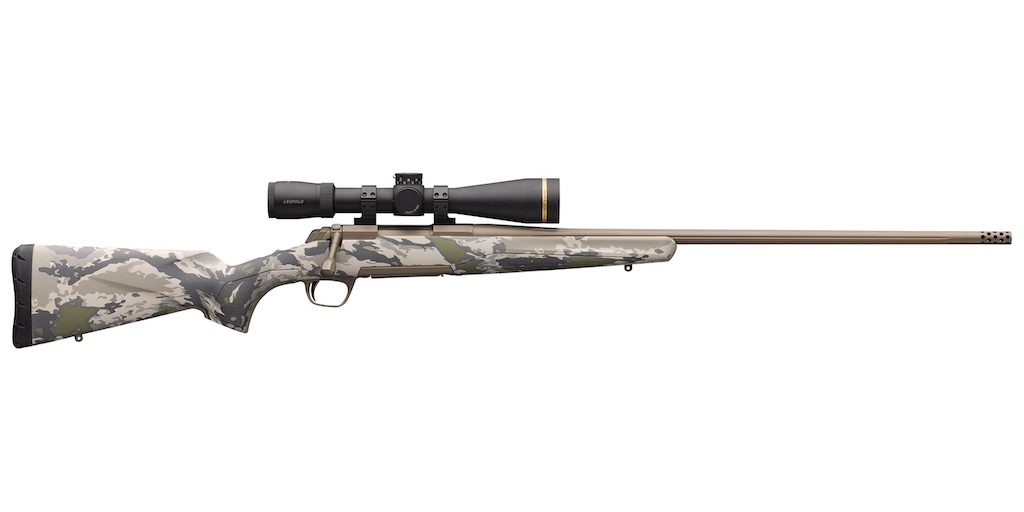
With so many magnums to choose from, why the .300 Win?
Based on rifle and reloading die sales, the .300 Win Mag is the most popular .30 calibre magnum ever and is in the top ten of all rifle cartridges. Choosing a rifle will not be a problem unless too many choices is a problem for you. All the manufacturers that I know of the chamber for the .300 Win Mag. The other 30s have much slimmer pickings available. I feel it is ideally suited for most situations encountered while pursuing North American game. Not too much. Not too little.
.300 WINCHESTER MAGNUM Design
Because of case capacity and design, the .300 Win gets its potential from a 24-26 inch tube, unlike the Ultras and Weatherbys, that require 26-28+ inches for full performance.
Next, the trajectory is very tight. For example, a 180-grain slug sighted in 1.4 inches high at 100 yards is zeroed at 200 and just 6.4 inches low at 300. When compared to the 30-06, the .300 is able to launch a 180-grain slug at 3100fps making it at least 25% flatter than a 180 from the 30-06 at 2700 fps. In addition, the .300 is able to keep a bullet supersonic (faster than the speed of sound) beyond 1200 yards.
Being a 30 caliber, it gives the handloader a vast selection of bullet types and weights enabling the shooter to fine-tune his rifle to a large range of uses. In addition, factory ammo selection is also much greater compared to other “big 30s”. Unlike Weatherby ammo, you don’t have to get a home equity line of credit to buy a box of .300 Win. Furthermore, its worldwide popularity ensures that wherever a hunt may take you, you will be able to find ammo in case an emergency arises.
Accuracy is superb. In addition to the .300 being very successful in the hunting world, it has enjoyed much success as a long-range target round. It is the most used cartridge at the 1000 yard competition at Camp Perry. This is where the best shooters in the world compete. Enough said.
.300 WIN MAG Reload
For a magnum, the .300 Win is quite easy to reload. Much like the .308 Win, it performs well with a wide range of components. Its popularity though, has created volumes of load data and recommendations that can be a bit overwhelming to the handloader. To help you wade through all the data, I’ll give you a few suggestions that have done well for me.
The .300 Win shines with bullets in the 165-200 grain range. The .300 Win Mag performs better than the short magnums when using heavier slugs. The short magnums have lots of advantages but lose some get-up-and-go with slugs over 190. The taller powder column of the Win Mag keeps its magnum performance throughout all bullet weights. I have had the best luck when using 180-grain hunting tips and the 190 grain Sierra HPBT Matchking as my paper puncher. I generally lean toward the slower burning powders that fill the case and the .300 Win is no exception. Like many Winny shooters, my powder of choice is Reloder 22.
I have worked up loads for several .300 Win Mags and always have outstanding results using RL-22 powder. H4831SC has been another winner for me, especially with lighter 155-168 grain bullets. With large capacity cases, it is important to work near maximum charge weights. Reduced loads, especially with slow powders, can present some dangerous scenarios. Always use a trusted manual or manufacturer’s web site when obtaining data. Reloading forums have some extreme characters that post some extreme load data. Be careful. I have listed several of my favorite loads in the table below.
.300 Win Mag Bullets
As mentioned earlier, the neck of the .300 Win Mag is quite short. Therefore to ensure sufficient neck grip, the reloader needs to pay close attention when seating the bullet. Make sure that the bullets bearing surface is seated such that it doesn’t drop below the top of the neck. This is especially important with heavier bullets having a long taper. To deal with this issue, some load manuals don’t even recommend seating to the SAAMI case overall length of 3.340”. Seat to a length that just fits into your magazine and ensure that the slug is not touching the riflings of the barrel. This also may enhance the accuracy as the bullet jump is less versus seating to SAAMI specs. Nosler designed the 180-grain Protected Point Partition specifically for the .300 Win Mag. Due to its blunt point, it allows the reloader to seat to 3.340” without any worries.
One drawback to belted magnums is short brass life. You can prolong the life of your brass and improve your accuracy by sizing the case just enough to chamber smoothly. Overworking the brass reduces case life. In fact, just use a neck sizer if you are shooting from the bench.
To summarize; flat trajectory, high energy, inherent accuracy, reload-ability, vast ammo and rifle selection, manageable recoil, and versatility all make an impressive resume for the .300 Winchester Magnum. What more could you ask for? So, if you are in the market for a new rifle, or just get a case of “gun itch”, don’t look past the good old Winny.
